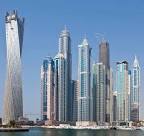A Traveller’s Tale: Mauritius
 On reaching Mauritius, Bollywood songs from the cab’s FM radio instantly made us feel at home. Our Chauffeur cum guide was fluent in Creole and Bhojpuri. His great-grandmother had come to Mauritius as an indentured labourer and a few generations lived a life of struggle and penury. On reading the book “Voices from Indenture”, I was enlightened of their plight. My guide was happy that the recent economic growth had made their lives better, but the elders were worried about the spending habits of the youth and their lack of enthusiasm in learning Bhojpuri. One could easily find old women wearing yellow vermillion and tying their saris in the old style, while the young ones were comfortably walking in their western outfits.
On reaching Mauritius, Bollywood songs from the cab’s FM radio instantly made us feel at home. Our Chauffeur cum guide was fluent in Creole and Bhojpuri. His great-grandmother had come to Mauritius as an indentured labourer and a few generations lived a life of struggle and penury. On reading the book “Voices from Indenture”, I was enlightened of their plight. My guide was happy that the recent economic growth had made their lives better, but the elders were worried about the spending habits of the youth and their lack of enthusiasm in learning Bhojpuri. One could easily find old women wearing yellow vermillion and tying their saris in the old style, while the young ones were comfortably walking in their western outfits.
The Hindi-Tamil language row occurred in Mauritius when a few years back; the banknotes had swapped the order between Tamil and Hindi, forcing the government to withdraw such notes. In their banknotes, they first write in English, followed by Tamil (as they came earlier than the Bhojpuri speaking people) and then in Hindi.
The “Ganga Talao”, a sacred lake having water mixed from various religious places of India, is the centre of all religious activity. Our curiosity took us to a few houses where the basil plants in their aangan welcomed us. People visit India mostly for wedding shopping and our guide showed us a wedding card written in French. The beautiful colour of the ocean invited us to many fun activities like Parasailing, Submarine ride and Undersea walk. The beaches and locales served as shooting spots for many Bollywood movies and one could spend hours enjoying nature’s beauty.
We stood at the point, where the first Indian immigrant came, where stands the statue of Anjalay Devi, a sugarcane farmer who was beaten to death by the farm owner. I realized that the warmth of the people towards India had protected the umbilical cord between Mother India and Mauritius for centuries